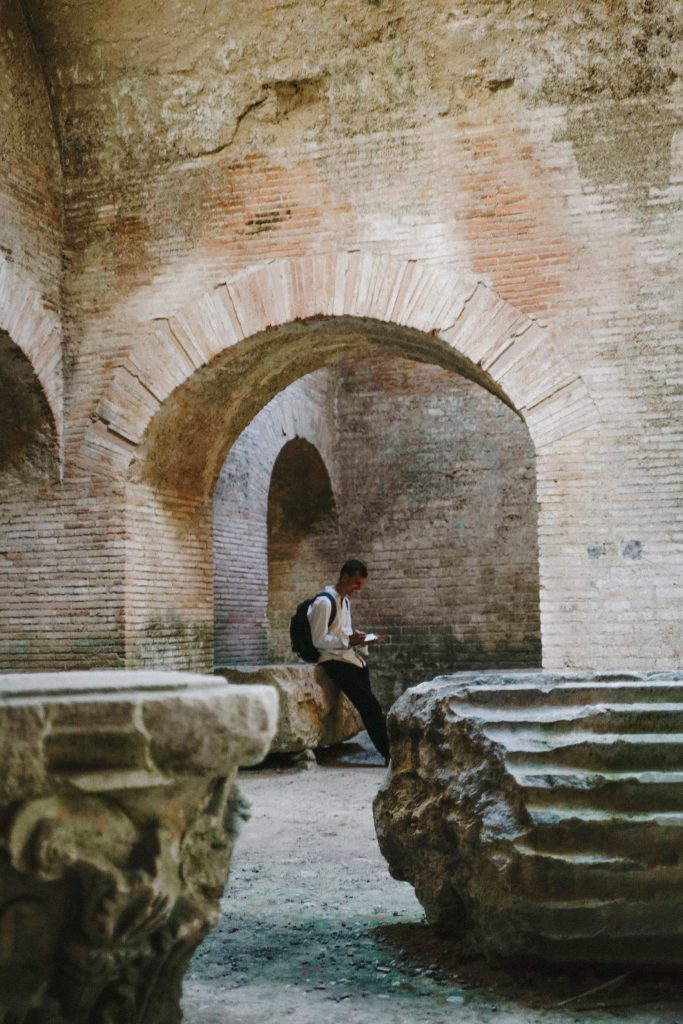

Joined by prof. Jan Gadeyne, we had the amazing opportunity of being shown around some of the most memorable sites at least for myself, in the area. One should perhaps at least mention the amazing roman thermal complex of Baia, or more commonly known as the Parco Archeologico of Baia. Some of us absolutely blown away by the beauty of these ruins, one of the structures stood out among the others and that is one of the oldest if not the oldest dome structure.

Partially under water and filled with earth, this decaying structure, held up on its side by double walls and landfill, I stood there trying to absorb it all for a good fifteen minutes, amazed. Not only by the capabilities of the Roman architects and engineers, but by the beauty, the reflection of the dome in the water, the small island in the middle of the pond to which a small bridge was made, the decaying walls and vegetation partially covering it. Even Jan saw my amazement and had to point it out to me. Perhaps his theory that ancient architecture is the only real architecture has some basis after all.

Once arrived in Bacoli, we paused for lunch, during which a couple of us had the chance to try local cuisine in one of the most local restaurants yet. Accessible through a corridor inside a small courtyard of a city block, the owner of the restaurant seemed to throw a couple of tables together in his living room, and most probably ran the kitchen with his wife. Amazing seafood themed dishes came out perhaps after forty minutes from when we ordered, making us about twenty minutes late to the continuation of the trip, but more than happy having had the chance to try a small town’s home cuisine. The amazement by these structures in a ruinous state would not stop for the rest of the day, and would only gradually increase from the amphitheater we visited in the morning, to the baths with the dome mentioned, to breath taking water reservoirs, especially the Piscina Mirabilis.
(all photos credit to Ihwa Choi)
